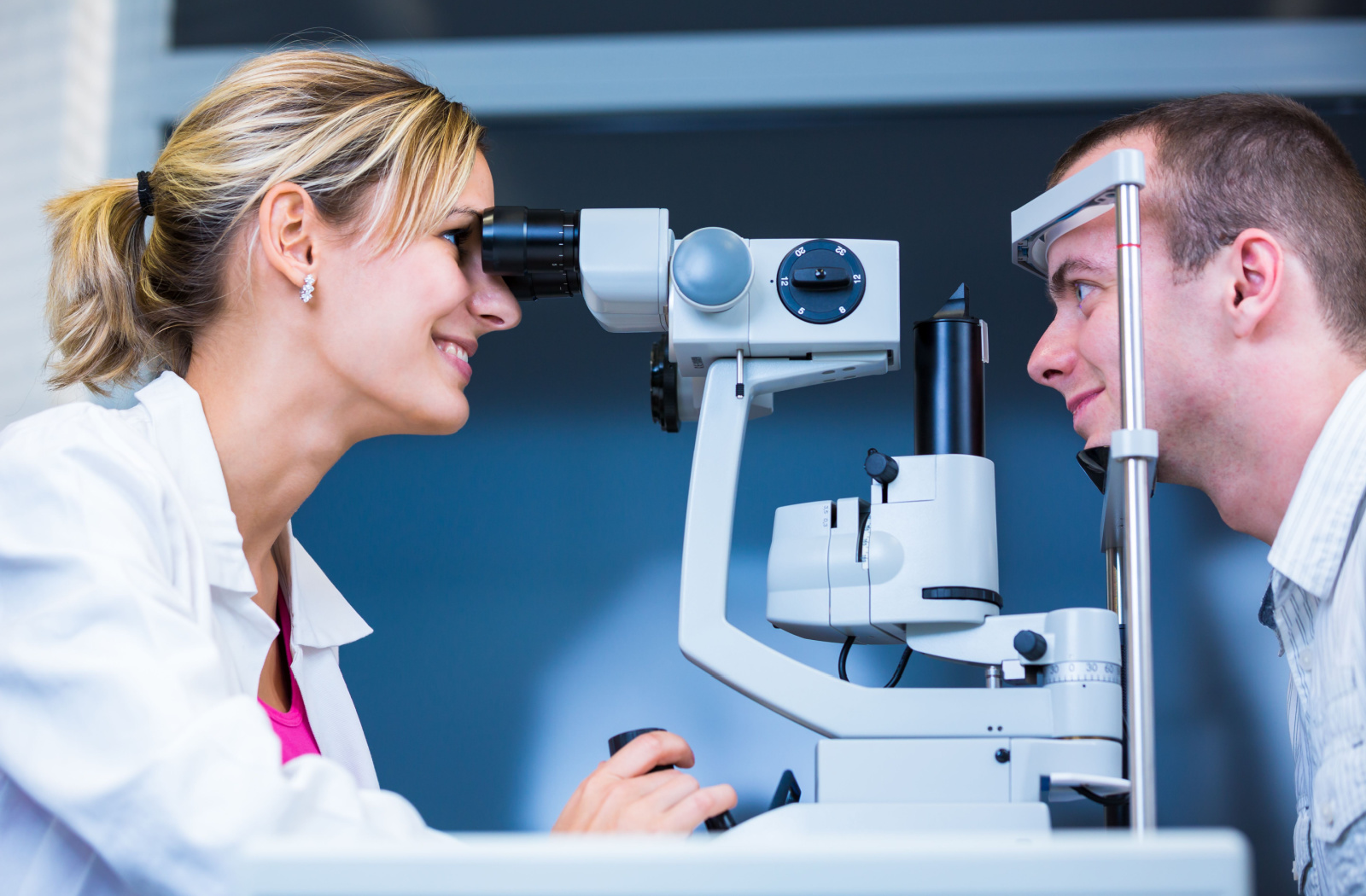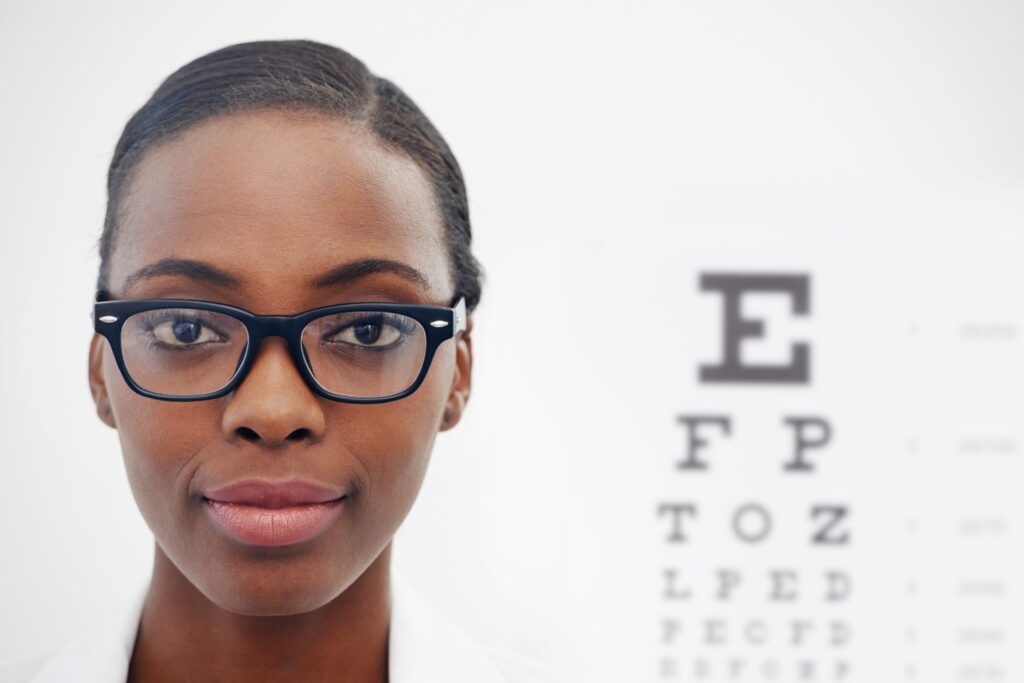The Comprehensive Eye Exam: What to Anticipate During Your Visit to the Eye Physician
A visit to the eye medical professional for a comprehensive eye examination is even more than a regular examination; it is an essential action in guarding your aesthetic wellness. What exactly happens throughout the eye wellness analysis, and just how does it affect the prescription process?
Initial Consultation
The first examination throughout an eye examination functions as a crucial structure for recognizing a client's visual health and wellness requirements. This phase establishes the tone for the whole examination procedure, enabling the eye doctor to collect essential information about the person's medical history, lifestyle, and details vision issues. By carefully reviewing any type of pre-existing problems, drugs, or previous surgical procedures, the eye treatment specialist can customize the examination to deal with specific needs effectively.

Furthermore, the preliminary consultation is a chance for patients to articulate any type of concerns or questions, promoting a joint connection with their doctor. This interaction not only ensures that the person feels notified and comfortable however additionally empowers them to take part proactively in their eye health and wellness administration. Jointly, these discussions make it possible for the optometrist to develop a customized assessment strategy, making sure optimum care and specific medical diagnosis.
Visual Skill Examination
Kicking off the core elements of an eye exam, the visual skill test is created to assess the intensity and clarity of a client's vision. This vital evaluation helps figure out just how well an individual can determine letters or icons at a standardized distance, typically using a Snellen chart (Opticore Optometry). The chart comprises rows of letters that lower in dimension from top to bottom, with the individual placed at a traditional range of 20 feet
Throughout the test, the patient is asked to cover one eye and read out loud the smallest line of letters they can see plainly. This procedure is duplicated for the various other eye. The results are taped as a fraction, with 20/20 vision indicating regular aesthetic skill-- where the person can see at 20 feet what an individual with regular vision can see at that distance.
The visual skill test additionally recognizes potential refractive errors such as hyperopia, myopia, or astigmatism, which could demand rehabilitative lenses. By developing a standard of aesthetic performance, the test is an essential analysis device that aids the eye care specialist in establishing a suitable treatment strategy customized to the person's special aesthetic requirements.
Eye Health Assessment
Complying with the aesthetic acuity test, a comprehensive eye wellness analysis is performed to make sure the overall wellness of the eyes. This critical sector of the eye exam includes a thorough analysis of both the inner and external frameworks of the eye.
Via the usage of ophthalmoscopy or fundus photography, the retina, optic nerve, and blood vessels are diligently reviewed. In lots of situations, pupil extension is performed to enhance exposure of the interior eye frameworks, although this may result in temporary light sensitivity for the individual.
Additionally, intraocular stress is measured to screen for glaucoma risk. This is usually done utilizing tonometry, which can identify elevated stress levels that could recommend prospective damages to the optic nerve. Collectively, these assessments develop a detailed analysis to keep eye health.
Refraction and Prescription
Exactly how does one make certain ideal vision? An essential action hinges on the process of refraction and acquiring a precise prescription. Refraction is an innovative procedure performed by eye care experts to figure out the exact lens power required to correct refractive errors such as myopia, presbyopia, hyperopia, and astigmatism. The goal of this treatment is to examine just how light bends as it travels through the eye, permitting the practitioner to figure out whether corrective lenses are needed for improved visual skill.
During the refraction process, the individual is asked to browse a phoropter, a tool that has numerous lenses. The professional will systematically alter these lenses and ask the person to contrast clarity between options until the most effective feasible vision is accomplished. This treatment is vital in crafting a precise prescription that specifies the proper lens power for glasses or call lenses.
The prescription derived from this procedure not only enhances vision yet also functions as a More Bonuses structure for choosing appropriate restorative glasses. It is vital to ensure that prescriptions are regularly upgraded, as changes in vision can occur over time, emphasizing the value of routine eye evaluations. This precise focus to information assists keep clear, comfy vision in day-to-day live.
Follow-Up Referrals

During a follow-up see, the eye doctor will certainly carry out a series of examinations to examine aesthetic acuity and check for any type of modifications in vision that may necessitate an upgrade to the prescription. Furthermore, the follow-up supplies a chance to discuss any type of discomfort or problems experienced with present eyewear. Modifications can be made to make sure comfort and efficacy, whether through lens modification or framework modifications.
For people with ongoing conditions such as glaucoma, diabetes-related eye concerns, or macular deterioration, even more frequent follow-ups might be needed. These appointments are vital for handling and potentially slowing the progression of eye condition. Abiding by these recommendations can substantially add to keeping aesthetic wellness and avoiding lasting complications.
Conclusion
The extensive eye test is a vital process for keeping aesthetic health and wellness, including an in-depth analysis of clinical background and vision concerns. Key components consist of the visual skill test, which reviews eyesight quality, and the eye wellness analysis, which takes a look at the general condition of the eyes. Refraction get more tests aid determine the exact lens prescription essential for ideal vision modification. Follow-up recommendations give guidance for recurring eye care, guaranteeing that any kind of potential problems are attended to immediately and efficiently.
A check out to the eye doctor for a detailed eye exam is even more than a regular check-up; it is an important step in securing your aesthetic health.Kicking off the core components of an eye exam, the aesthetic acuity examination is created to evaluate the intensity and clarity of an individual's vision.Complying with the aesthetic skill test, an extensive eye health analysis is carried out to make certain the overall wellness of the eyes. These sees allow the eye treatment professional to keep an eye on changes in vision, update prescriptions, and assess the total health of the eyes. Secret elements include the aesthetic acuity test, which reviews vision clearness, and the eye health and wellness evaluation, which takes a look at the total problem of the eyes.